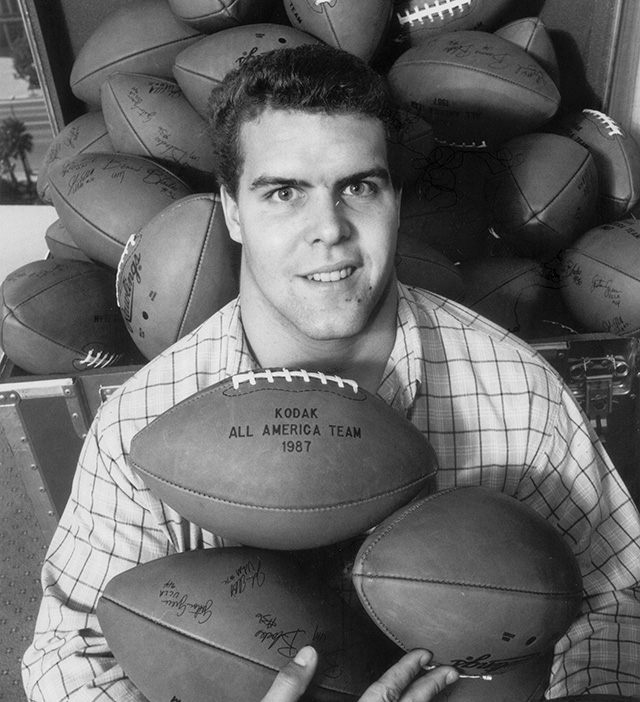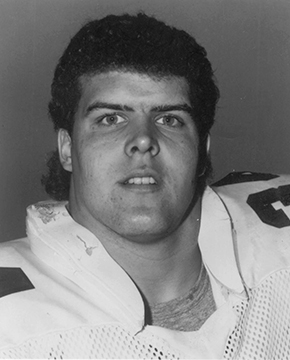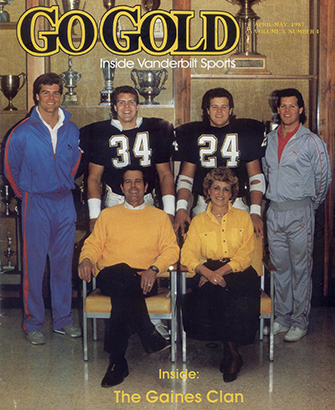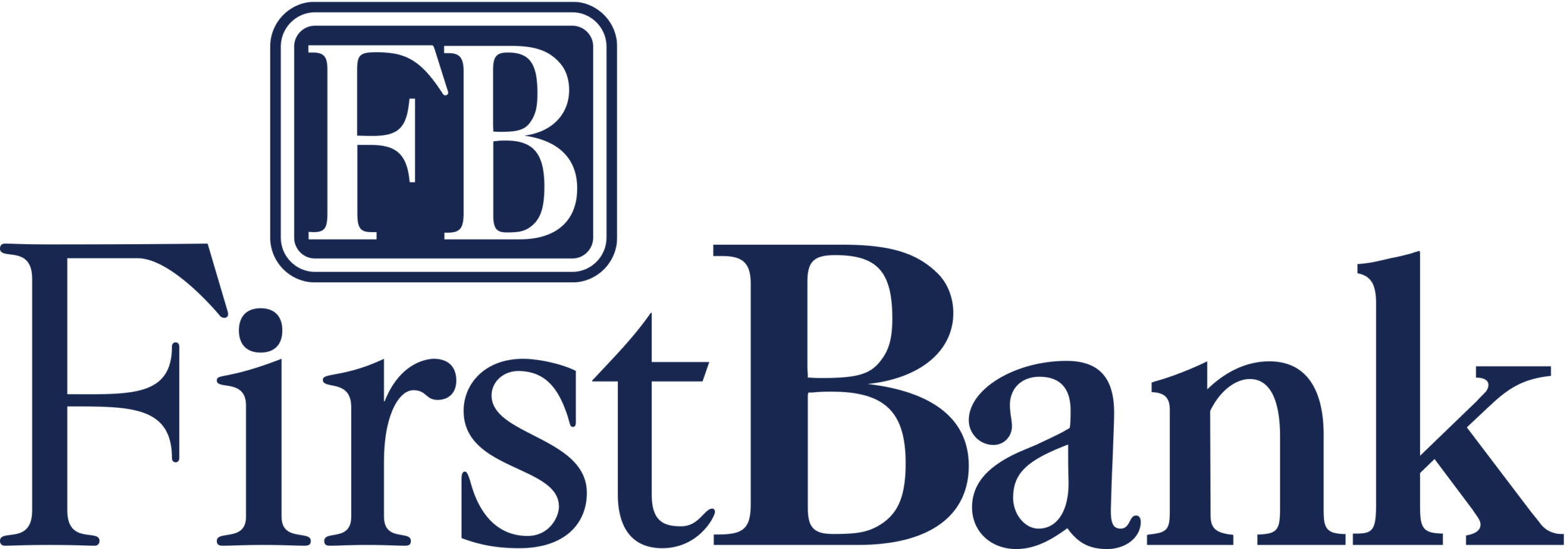Oct. 1, 2014

Commodore History Corner Archive
Chris Gaines (1984-87) was such a dominant football player at Nashville’s Dupont High School that he played quarterback, tailback and defensive end. After starting the first game at quarterback as a senior, his coach moved him to tailback at halftime. The result was more than 200 rushing yards in the second half.
Gaines had been recruited by many of the top colleges and took his official visits to Vanderbilt, Tennessee, Texas A&M, LSU and Alabama. His older brother, Greg, was a linebacker for the Vols and played eight years in the NFL with Seattle. Gaines chose the Commodores and head coach George MacIntyre.
“My older brother Greg played at Tennessee,” Gaines said recently. “I loved Tennessee growing up, but I really wanted to make a name for myself. Vanderbilt offered me the best opportunity when you considered the education and closeness to my home. My family would be able to see me play and my girlfriend, that became my wife, was close at MTSU. I knew if I went to Vanderbilt and did things the right way it would create opportunities for me outside when I was finished with football.”
Vanderbilt recruited Gaines as a fullback. He weighed 200 pounds, which at the time was a good size for a running back. The 6-footer played that position as a freshman, but was redshirted. In the spring he was moved to linebacker. Gaines made the difficult transition from a high school football player to college.
“When you are recruited and signed by SEC schools you are typically one of the or the best player on your high school team,” Gaines said. “When you get to college, especially the SEC, everybody is really good. They are bigger, stronger and faster. There is the knowledge of the game techniques. My first experience of that was my redshirt freshman year. In the spring that’s when I had my bad ankle injury.
“It was really bad. I recovered from that in the middle of the season. I hurt it in spring practice and came back for the fourth game in the fall, which was a really quick recovery for the injury. I remember my first game against LSU at linebacker when I learned the big difference in SEC football. They had a guard named Lance Smith that played 10 years in the NFL. He came out and hit me on my first play. I thought he had broken my chin when he hit me. I knew it was a different game.”
Vanderbilt was 5-6 that season with wins over Kansas State, Maryland, Kansas, Alabama and Mississippi. Gaines became a weight room junkie working hard to improve himself as a football player. A senior bio on Gaines stated, “one of the strongest linebackers in college football, having benched pressed 420 pounds and having handled 661 pounds in the squat event.”
“That started when I was really young,” Gaines said. “I started lifting weights when I was 13. I would go down to the basement of our house and lift weights before school and at night. I would do 30 sets of squats. I took supplements from the time I was 13 years old. I would set my alarm clock to wake up and take supplements. I was trying to gain weight and put on size. It was something I always did.”
As a sophomore, the Commodores slipped to 3-7-1 and Gaines was the starting middle linebacker all season and on the special teams.
“It was a big adjustment for me playing linebacker,” said Gaines. “I was learning as I was playing. My thing was wanting to be aggressive and I always wanted to play hard. Those were the goals that I set for myself. Every snap, every game to play hard and aggressively. I had not perfected the technique of playing linebacker. I was really getting by on athletic ability and playing hard and being aggressive.”
At the end of that season, Watson Brown left his head coaching position at Rice to return to his alma mater and replaced MacIntyre.
“That was tough,” Gaines said. “Coach MacIntyre was totally respected. He was a great person that treated the players well and was a great example as a role model. On the football side Vanderbilt was looking for something new trying to get to the next level for a long period of time. I guess they felt that change was necessary. Watson Brown came in with all the hoopla and a tremendous football player in his own right. He graduated from Vanderbilt and had a great offensive mind. There was a lot of excitement with his arrival.”
In Brown’s first season as head coach Vanderbilt was 1-10 with its lone victory over Duke. Gaines recorded a team-high 119 tackles as a junior.
“It seemed like we were always changing defenses and schemes,” said Gaines. “Vanderbilt just wasn’t very good on defense. They were always trying to get players in the right positions and corporating different schemes. The schemes that we were running allowed me to make plays. That was something I took a lot of pride in. I think I understood the position better learning the techniques and not to take false steps and knowing my keys. I was studying film more. I think I progressively improved with more experience.”
 As a senior and a team captain in 1987 Gaines collected an amazing, school-record 37 tackles in the Tulane game. Did Gaines just go berserk in that game?
As a senior and a team captain in 1987 Gaines collected an amazing, school-record 37 tackles in the Tulane game. Did Gaines just go berserk in that game?
“They ran the option and had a quarterback at that time I believe was up for the Heisman,” said Gaines. “He would give it to the fullback, keep it or pitch it to the tailback. I was also playing on all the special teams. The thing I take the most pride in the accomplishments I had in football at Vanderbilt was in my senior year I played every snap of every game on defense.
“Playing linebacker in the SEC is challenging because you get nicked up and concussions. I had to get my shoulder shot up at certain times. I was covering kicks on the kickoff teams and covering punts on the punting team. I was on the punt return team. I was on the field a lot. The Tulane game I was just making good reads and I was able to make plays.”
At the end of his senior season the Commodores were 4-7. Gaines was First Team All-SEC, First Team Kodak All-American, while establishing a school and SEC record 214 tackles (136 solo). He had 440 career tackles. Gaines was also the MVP of the Blue-Gray Bowl in Montgomery, collecting 18 tackles. The Tennessee Sports Hall of Fame also named him the Amateur Athlete of the Year.
“I was blessed and the good Lord gave me opportunities, “Gaines said. “I worked non-stop every day. All I thought about was football. I lived, slept and breathed football. My goal from the time I was a little kid was to play professional football. I had a great example in my older brother who played professional football and my uncle, my mom’s brother.
“He was Ray Oldham from MTSU and played 11 years in the NFL and won a Super Bowl with the Steelers. There was a fire in me to have those accomplishments.
In the Blue-Gray game I was a little bit frustrated. I felt that I had good practices and I didn’t start in the game. I was wondering if I would get the opportunity to show what I could do for those scouts at the game. One of the linebackers got hurt early on and I came in. I hated that somebody got hurt, but it ended up being a great game for me.”
The Phoenix Cardinals drafted him in the fifth round of the 1988 NFL Draft.
“I never talked with the Cardinals’ personnel leading up to the draft,” said Gaines. “I felt like the Houston Oilers were going to draft me higher. There were several teams that I had more contact and the Cardinals just came out of nowhere. It could be that Gene Stallings was their coach at the time and he was an SEC guy from Alabama.
“Maybe that had something to do with it. It really was not a good situation for me. I was thrilled to be drafted, but the bad thing was at the time the Cardinals were running a 4-3 defense and they were only one of a few teams in the NFL running a 4-3 defense. So they only had one middle linebacker and I was a true middle linebacker. I was not an outside linebacker.
“They were only going to keep two middle linebackers. They had their starter who was Niko Noga from Hawaii. In the off-season they signed Ricky Hunley who had just won a Super Bowl with the Denver Broncos. Now that’s not an excuse. I could have had success there, but I really didn’t get the opportunity I was hoping for.”
Gaines was eventually released from the Cardinals training camp on the final cut-down day. When Gaines’ name went out on the wire that he was available the Dolphins flew him down for a workout.
“They flew in about five linebackers,” said Gaines. “I worked out for [Don] Shula and the linebackers and the special teams coach. They signed me that day. I started on special teams a couple of days later. It was very quick. I had to learn everything. John Offerdahl was the starting linebacker and of course he was a Pro Bowl player. I was backing him up and never started any games except on special teams.”
Gaines was the leading tackler on special teams through the Dolphins’ first five games. He visited the team doctor about a hurt knee. Playing hurt in the NFL is part of the game and Gaines was soon released. Tampa Bay, coached by former Alabama coach Ray Perkins, invited Gaines to the Bucs training camp the next year (1989), but he didn’t make the final roster.
“I was sitting in my house watching ESPN and a replay of a Canadian football game,” said Gaines. “It was a Toronto Argonauts game. I had never seen a Canadian Football League game and it was tape-delayed. No sooner had I watched that game I received a telephone call from the general manager for the Argonauts, Mike McCarthy. He said Chris, `We’ve watched you on film. We’ve followed you in college and saw you were released by Tampa. We want you to come up and work out for us in Toronto.’
“I went up there and worked out. When I came off the practice field I met with McCarthy and they signed me. I went over to the facility and met with the defensive coordinator, learned the defenses and schemes and started in the game that next day at linebacker. I probably had the best game of my career. It was a great entry point for me into Canadian football.”
Gaines played for the Argonauts from 1989-91. In 1991, Gaines was on a team that won the Grey Cup title, their Super Bowl, and he tied a franchise record for most tackles in a season. He also registered six interceptions.
“During the year I was having problems with my ankle,” Gaines said. “I could still play and it was hurting really bad. A lot of people didn’t know it. I didn’t favor it or anything. It was the result of bad surgeries I had on it before and it just got worse and worse. The team doctor did X-rays and a bone scan and told me I had osteoporosis with bone on bone in the joint and that his advice was for me to stop playing.
“As much as I loved football I knew it had to end some time and there were other things I could do to be successful. I announced my retirement and we ended up winning the Grey Cup. At the time our owners were John Candy, the comedian, Wayne Gretzky and Bruce McNall, the owner of the LA Kings, at the time. In the middle of the Grey Cup parade in downtown Toronto, John Candy pulled me aside into this little tavern. He asked me what I wanted to do since I was retiring. I told him I love strength and conditioning and that’s what I wanted to coach. He said, `How would you like to be the first full-time head strength coach in Canadian football?’ I told him I’d love that. He said, `You’re hired.’
“I was the strength coach the next year for the Argonauts and I also coached special teams. I finished up that year and came home during the off-season and went over to Vanderbilt and saw Paul Hoolihan who was the athletics director at the time. I wanted to go back to Vanderbilt and coach and he offered me the assistant strength coach position. Gerry DiNardo was the coach (from 1991-94). I went in there and worked hard to show them what I could do. At the end of that season they named me the head strength coach for all sports.”
In 1997, Gaines was the inside linebackers coach for head coach Woody Widenhofer (1997-2001). Widenhofer had been the defensive coordinator for the world champion Pittsburgh Steelers and held the same position under Vanderbilt coach Rod Dowhower (1995-96). Gaines was named the SEC Linebackers Coach of the Year.
 “That was the most fun I ever had in coaching,” said Gaines. “I was going in real early and staying late. I signed a bunch of really good recruits. Then something happened to me personally. I was working nonstop. I was at the house one day, got up early and came downstairs. My daughter Ashley, who was about five years old at the time, had put a glass vase on the counter top with a flower she had picked. She took an index card and drew a little picture of herself with tears coming out and wrote something like, `Daddy, I never get to see you or I miss you.’ That just tore me up. I started praying about it.
“That was the most fun I ever had in coaching,” said Gaines. “I was going in real early and staying late. I signed a bunch of really good recruits. Then something happened to me personally. I was working nonstop. I was at the house one day, got up early and came downstairs. My daughter Ashley, who was about five years old at the time, had put a glass vase on the counter top with a flower she had picked. She took an index card and drew a little picture of herself with tears coming out and wrote something like, `Daddy, I never get to see you or I miss you.’ That just tore me up. I started praying about it.
“This was in the middle of the season. I told Woody I wanted to thank him for the opportunity he gave me and absolutely loved it, but my family was more important. I wanted to watch them grow up, watch them at practices and in plays and that at the end of the year I was going to give up coaching. I will never forget he said, `Are you crazy, Chris? You could be the next head coach at Vanderbilt.’ I told him I appreciated that, but that my family was more important. So I got out of coaching.”
Gaines is from a football family. His father, Buddy, was a three-sport athlete at Dupont who went to Murray State on a football scholarship. Older brother, Greg, played eight NFL seasons at Seattle. Younger brother, Brad (1986, 88-89) earned a football scholarship at Vanderbilt and was a teammate to Chris. Older brother, Jeff, chose not to attend college, but could have played football or baseball at a small school and “was a great athlete as far as natural athletic ability and probably the best overall athlete in the family,” Chris Gaines said.
It is a well-documented story about the Ole Miss/Vanderbilt game on October 28, 1989 in Oxford, Miss. involving Commodore fullback Brad Gaines and Rebels defender Chucky Mullins.
A tackle by Mullins on Gaines resulted in Mullins shattering four vertebrae in his spine. Mullins was paralyzed from the neck down and eventually died from his injuries on May 6, 1991. As a tribute from such an emotional experience, Brad has maintained Mullins gravesite in Russellville, Ala., three times a year every since his death.
“It affected us because we watched our younger brother struggle,” said Gaines. “He wasn’t sure if he wanted to keep playing football and maybe it was too much for him. From that aspect it was very difficult, but both Greg and I were away playing football so we weren’t around here much. It wasn’t something that we talked about a lot. Brad really keeps that stuff to himself. It’s not something that we talk about.”
In 2005, Gaines represented Vanderbilt as its “SEC Legend.” After leaving football as a profession, Gaines owned a fitness center for 10 years and coached high school football. Gaines went into the medical sales business as a regional manager and CEO. Since January 1, 2013, Gaines has operated CD Medical, Inc., as owner, president and CEO.
Gaines still remembers his Vanderbtilt football playing days fondly.
“There is just a tremendous amount of pride,” said Gaines. “Just knowing it’s such a great institution, an academic institution, with a lot of tradition there. If you go to Vanderbilt and do the right thing to prepare for the future I think it opens a lot of opportunities. I miss it because I miss my teammates, the coaches, the camaraderie and the growing experiences.
“At that time you are transforming from a kid to an adult. I’ve got great memories that I wouldn’t trade. People ask me all the time why didn’t I go to Alabama? You could have been on a team with Cornelius Bennett and Derrick Thomas. Or what if you went to Tennessee? (Vanderbilt) was the right place for me. I thoroughly enjoyed my experiences and I am excited about the future of the program. I love Coach (Derek) Mason and what he represents. I definitely believe they are headed in the right direction.”
If you have any comments or suggestion contact Bill Traughber via email WLTraughber@aol.com.


